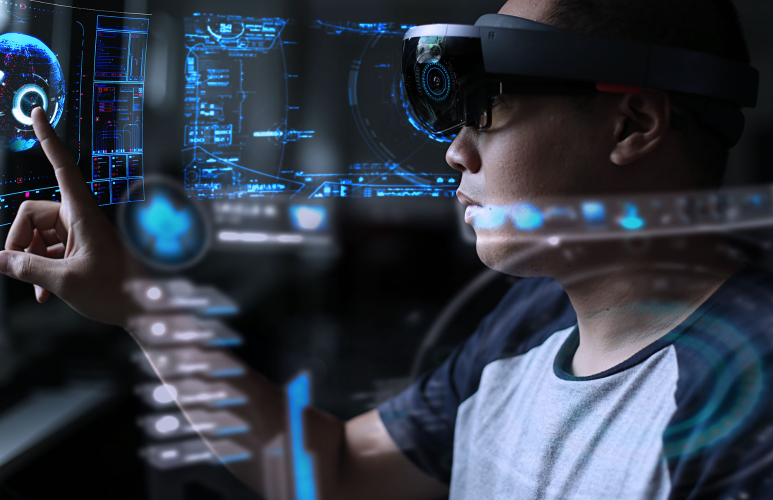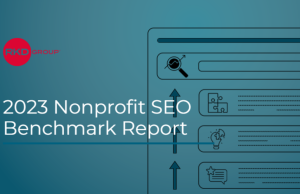Some people believe traditional webinars are quaint relics of earlier communication methods. They are heavily moderated, one-way events at a time when the value of two-way dialog has been championed for years. This trend will only accelerate as Millennials and Gen Zers, who have grown up among mediums that foster constant feedback loops, continue moving into decision-influencing positions.
Those people might not be wrong. They also might not be correct. The process is morphing.
“We’ll see people moving into learning management systems, which allow the opportunity to store video for review, have real-time conferencing and engagement, but also have threaded forums,” nonprofit support organization, said Marnie Webb, chief community impact officer for San Francisco, Calif.-based global tech nonprofit TechSoup.
Learning management systems function more like the open-table arrangements in conference halls, where individuals can review clusters of participants for both body language — if video cameras are engaged — and conversation flow before joining them. Some systems allow all participants to share their information on their personal screens, as though a napkin sketch were being passed around a table.
“It’s more in keeping with a lot of the kind of community organizing and community conversations we want to host than a traditional kind of webinar format, which is invite and watch,” Webb said.
It is possible to blend invite and watch and two-way communication. Webb pointed to Loom, a service that allows people to create short videos that serve as conversation catalysts among those in disparate locations. “They get the video. They can comment on it. It’s private. It’s not on YouTube. It’s not indexed by the web, and I can put [the dialog] in folders and organize it,” Webb explained.
The next step in communication software involves an immersive experience that blends augmented reality (AR), artificial intelligence (AI) and an immersive medium that doesn’t depend on either a computer monitor or a mobile camera’s view window. Webb offered the example of a walking tour done through headsets that overlay AR historical data onto streetscapes, with a voice-activated audio component that links to a database of interviews. Ideally, tour participants would ask questions and an AI-fueled database would provide clips of interviews that then provide answers.
Before such a system could be put in place, however, Webb brought up a key concern. “A huge chunk of the world doesn’t have reliable electricity or Internet access,” she said. “We have to figure out an infrastructure grid that can support more access, or we’re going to leave out a whole lot of voices.”
Her own organization, she noted, hosted an internal global forum in which some sessions had to be cancelled due to Internet instability in the countries from which people were joining.
With the exception of the stable global Internet connectivity, Webb’s beyond-webinars projections are well within current technologies. Denver-based DaVinci Institute Founder and Executive Director Thomas Frey imagines a world where information conveyance is taken out of the realm of flat screens, whether through three-dimensional holographic renderings, nanotechnology or systems that allow direct transfer of information into the brain. But these new technologies will require significant paradigm shifts.
“We’ve been trained to think two dimensionally, on two dimensional whiteboards, since birth,” Frey said. “If we get rid of display on our computers and were to project, three dimensionally, everything above our computer, we can’t imagine what that would look like. If I’m standing on a stage in front of a group of people, I know the interaction. I know what to expect,” said Frey.
“When we switched during COVID to doing everything two dimensionally, it was a poor substitute for the three-dimensional experience. You don’t get to capture the energy of the room. You don’t watch people’s faces. You can’t tell when a light bulb gets turned on in their head,” he said.
Webinars, according to Frey, are even a further step removed. They are one-dimensional. For humans who think two dimensionally and live three dimensionally, webinars present a barrier between information being presented and the human brain capturing, categorizing and reacting to it.
That said, there have been leaps in information transfer. Pre-Internet, getting an answer to a question through a library might take hours. Thanks to search engines, it now takes minutes. But a headset, which includes a set of dermal probes might allow a user to pose a question and receive an answer — or download a skill set — in milliseconds.
Mass use of this technology is still way into the future. Frey has been experimenting of late with an AI technology called a teacherbot. As users talk to it, prompted by questions it asks, it determines a user’s skills, deficiencies and learning habits (such as times of day when a user is most receptive or teaching methods). It eventually will suggest new skills or information a user might acquire, along with the best way of acquiring them.
The teacherbot might present new information based on a user’s habits, but Frey has also been thinking in terms of swarmbots — clouds of microscopic drones that will do everything from clean their users to assemble themselves into clothing to adjusting users’ emotional levels.
“We’re developing artificial intelligence and it’s going off in lots of different directions,” Frey said. “If AI knows what makes you cry in a movie, it’s also going to know what makes you buy in a retail setting or contribute to a nonprofit.”
George Weiner, founder and chief whaler at New York City-based nonprofit-focused digital agency Whole Whale, pumps the brakes on some of the more far-reaching technologies, at least as far as supplanting webinars. “The answer is it is webinars all the way down,” he said. “We’re tired of them, long live webinars.”
There still is room to adapt the fundamental structure of a webinar, according to Weiner. Apps such as Clubhouse offer voice-based social media platforms that could be integrated into the webinar medium. For all the talk in recent years of virtual and augmented realities, with the exception of gaming and sports, these technologies have not maximized for what they might offer a variety of settings, including webinars, Weiner said.
“Maybe we’re stuck in a mindset that people don’t learn best when they are preached at via webinars,” Weiner said. “But I don’t see them going away. They’re just going to jump mediums.”
Organizational reliance on webinars due to the coronavirus, whether as management or education tools, helped solidify webinars’ footing in the world, according to Weiner. “This rising generation, as they grow and build companies, have this skill [of transferring knowledge through webinars],” he said. “Webinars have been normalized, as opposed to the thought ‘nothing beats in-person.’ We just jumped, by 10 years, a lot of the norms set with regard to webinars and video conferencing.”
Augmented reality, he noted, would boost the power of a webinar considerably. “I think we’re going to try to recreate the conference room with a number of people in there having a dial, raising a hand, seeing reactions,” Weiner said.
One direction in which webinars might go is embracing technologies that better allow participants to capture non-verbal cues, such as facial expressions, body language or positioning, all of which would involve technology that already exists but is being integrated with webinar and other communications platforms.
There are technologies that measure webinar messaging effectiveness. These technologies will help keep webinars in place and sharpen their effectiveness, Weiner added.
“Would you rather me give you the pulse rate data of your audience during your 45-minute webinar, or a post-webinar survey that only 10% of people fill out?,” he asked rhetorically. “Which would you choose? And then I’m going to ask you one follow-up: Do you have an Apple watch?”











